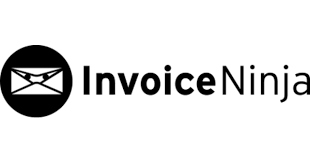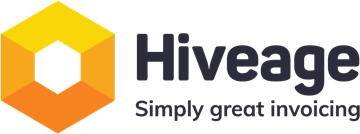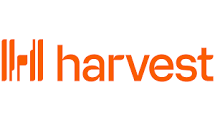Best Invoicing and Billing Software of 2025
Many, or all, of the products featured on this page are from our advertising partners who compensate us when you take certain actions on our website or click to take an action on their website. However, this does not influence our evaluations. Our opinions are our own. Here is a list of our partners and here's how we make money.
Invoicing software, also known as billing software, lets small-business owners and freelancers track the goods and services they provide and how much customers owe. The best options help you automate the entire invoicing process online — from creating estimates to tracking hours to collecting payments.
Many times, accounting software has built-in invoicing features that may offer everything you need. An invoicing-only product, on the other hand, can be a less expensive, simpler solution if you need just invoicing and expense tracking.
Here are some of our top invoicing software picks:
Best overall invoicing software: Square Invoices.
Best all-in-one invoicing and accounting software: FreshBooks.
Best free option: Zoho Invoice.
Why trust NerdWallet
| Product | Starting at | Promotion | Learn more |
|---|---|---|---|
 FreshBooks NerdWallet Rating Learn more on FreshBooks' website | $21/month Additional pricing tiers (per month): $38, $65, custom. | 70% off for 4 months. 30-Day Money Back Guarantee. | Learn more on FreshBooks' website |
 Square Invoices NerdWallet Rating Learn more on Square's website | $0 Additional pricing tiers (per month): $20. | 30-day free trial of the Plus plan. | Learn more on Square's website |
 Zoho Invoice NerdWallet Rating Learn more on Zoho Invoice's website | $0 Free. | N/A | Learn more on Zoho Invoice's website |
 Invoice Ninja NerdWallet Rating | $0 Additional pricing tiers (per month): $12, $16. | N/A | |
 Hiveage NerdWallet Rating | $0 Additional pricing tiers (per month): $19, $29, $49. | 14-day free trial of the Pro plan. | |
 Harvest NerdWallet Rating | $0 Additional pricing tiers (per month): $13.75, $17.50 per user. | 30-day free trial | |
 Invoice Home NerdWallet Rating | $0 Additional pricing tiers (per month): $9. | N/A |
A closer look at our top invoicing and billing software picks
Square Invoices
Why we picked it: Square Invoices is our top overall invoicing software pick thanks to its feature-filled free plan and clean layout. The free plan includes unlimited invoicing, options for collecting deposits upfront and automatic payment reminders. You can upgrade to its paid plan to access batch invoicing and more customization options, like the ability to change field names. As an added bonus, Square Invoices also lets you send contracts to make sure your clients understand and acknowledge your payment terms, due dates and refund policy. Read our Square Invoices review.
Unlimited invoicing, estimates, contracts, users and clients in all plans.
Integrates with Square’s all-in-one payment platform.
Streamlined and intuitive.
Ability to process in-person and online card payments as well as cash, checks, ACH transfers, Apple Pay and Google Pay.
Send recurring invoices.
Automatic payment reminders.
Gives clients the option to include a tip.
Must use Square’s in-house payment processing to accept online payments.
Free plan does not enable custom invoicing fields and the ability to auto-convert estimates into invoices.
» MORE: Explore Square’s POS solution
FreshBooks
Why we picked it: FreshBooks got its start as an invoicing product designed for freelancers and creatives. Though it doesn’t offer a free plan like some of its competitors do, its accounting services — including double-entry accounting reports and online bank feeds — set it apart from standalone invoicing products. In addition to accepting online credit card, Stripe and PayPal payments, the software enables ACH transfers for a small fee. Unlike some of its competitors in the accounting software industry, all of its plans include time tracking, mileage tracking and the ability to mark expenses as billable. If you're looking for an all-in-one invoicing and accounting product with a sleek mobile app, especially if you’re a solopreneur or freelancer, FreshBooks is a great choice. Read our complete FreshBooks review.
Stay in touch with clients through the FreshBooks mobile app and get notified when invoices have been viewed or become overdue.
Intuitive, customizable invoicing capabilities compete with those of more robust accounting solutions.
Track time and add billable hours to invoices in all plans.
Weekday phone support in all plans.
Highest-tier Select plan only comes with two users (additional users add $11 per month) and lower-tier plans put limits on billable clients.
Least expensive plan lacks double-entry accounting reports, bank reconciliation and accountant access.
Zoho Invoice

Zoho Invoice
$0
Free.
on Zoho Invoice's website
Why we picked it: Zoho Invoice is comprehensive yet easy to use. You can keep track of hours, expenses and inventory items on a variety of projects in an app or browser. When work is complete, you can send highly customizable invoices to customers, along with automated email reminders if payments become overdue. Businesses can access all of Zoho Invoice’s features for free, but invoices are capped at 500 per year. Zoho Books, the company’s accounting software product, also comes with invoicing features.
Send up to 500 invoices per year for free.
Portal lets clients pay invoices and view their transaction history.
Payment gateway integrations include Stripe, PayPal, Square and more.
Photograph receipts and attach them to expense reports.
Free invoice app for iOS lets you add a timer widget to your home screen, send invoices via iMessage and add new contacts by taking photos of their business cards.
Limited third-party integrations outside of other Zoho products and QuickBooks Online.
Invoice Ninja

Invoice Ninja
$0
Additional pricing tiers (per month): $12, $16.
Why we picked it: Invoice Ninja gives you the flexibility to choose from dozens of payment gateways, like Stripe and Square, to process online payments. Additionally, it enables you to ask customers to pay a deposit upfront, set a minimum payment requirement, and add taxes and a tipping option to invoices. Clients can pay online or use ACH payments to transfer funds. The paid plans come with additional useful features like bulk invoicing, but the free version is so robust that you may never need to upgrade — as long as you don’t exceed 20 clients. You can add additional users to only the most expensive Enterprise plan (for a fee).
Free plan supports unlimited invoices for up to 20 clients.
Automatically transfer credit card processing fees to customers and allow them to tip on invoices or pay incrementally over time.
Integrates with more than a dozen payment gateways including Stripe, PayPal, Square and Apple Pay.
Built-in inventory tool tracks items as they’re invoiced.
Portal lets clients view their invoices and payment history.
No direct integrations with bookkeeping or accounting software.
Enterprise plan pricing increases as you add more users.
Hiveage

Hiveage
$0
Additional pricing tiers (per month): $19, $29, $49.
Why we picked it: With Hiveage, creating one-time and recurring invoices is straightforward and the dashboard is easy to navigate. The billing software includes time and expense tracking even in the free version. You can accept online payments with any plan, but to accept offline payments through cash, check and bank transfer, you’ll have to subscribe to the most expensive Plus plan. Hiveage can also integrate with accounting, customer relationship management (CRM) and project management software via Zapier.
Free plan supports unlimited invoicing for up to five clients.
Integrates with a dozen payment gateways including Stripe, PayPal, Square and more.
Assign different billable rates to each type of task.
Direct clients to your own custom domain with the Plus plan.
No direct integrations with bookkeeping or accounting software.
All plans have client limits (highest-tier Plus plan caps at 1,000).
Harvest

Harvest
$0
Additional pricing tiers (per month): $13.75, $17.50 per user.
Why we picked it: Harvest allows members of a project team to track their hours in detail, often within whatever apps project managers are using. Managers can set the budget for a project and track expenses and hours to make sure teams are working efficiently. When it comes to invoicing, Harvest’s estimate, invoice and payment collection tools are easy to navigate, and it offers helpful features like automated email reminders to customers with late payments. If you’re concerned about credit card processing fees adding up, you can switch off the ability to pay with a credit card through Stripe. Instead, your invoices will give clients the option to pay only via ACH transfer.
Offers a free plan (limited to two projects).
Advanced time tracking features, including integrations with Google Calendar, Slack, Asana, Trello and other project management tools.
Display billable hours by task, person or project on invoices.
Snap and upload photos of billable expense receipts with the mobile app.
Integrates with QuickBooks Online and Xero for accounting.
Invoice customization options are limited. Free users can’t add company logos to invoices, and Harvest offers only two templates (one PDF and one GDoc).
Payment integrations are limited to Stripe and PayPal.
» MORE: Best business expense trackers
Invoice Home

Invoice Home
$0
Additional pricing tiers (per month): $9.
Why we picked it: Invoice Home offers a generous library of free invoice templates, and for a reasonable monthly fee, you can send an unlimited number of invoices to an unlimited number of customers. If all you need from your invoicing software is the ability to quickly spin up a large volume of invoices and make it easy for your customers to pay them online, then Invoice Home is a strong solution. You can use the billing software for free if you invoice less than $1,000 per month.
Large library of customizable invoice templates.
Invoice up to $1,000 a month for free.
Payment gateway integrations include PayPal, Authorize.net and Stripe.
No contract and no cancellation penalty.
Lacks additional features such as time and expense tracking.
No direct integrations with accounting software.
Additional invoicing and billing software to consider
In our review of fifteen invoicing software products, NerdWallet determined a few products that don’t make our “best” list are still strong contenders that are worth consideration. Consider one of the following solutions if those on our list above don’t suit your small-business invoicing needs.
Xero
Why it’s worth considering: Xero lets you send automatic payment reminders to clients, create customizable invoice templates and accept payments via ACH transfer, Google Pay, Apple Pay or card. To access time tracking and mileage tracking or claim expenses, you’ll have to subscribe to the Established plan. On the accounting software front, Xero stands out as a scalable solution that supports an unlimited number of users in all plans. This makes it a great fit for small-business owners who need to give multiple employees access to the software. Read our full Xero Accounting review.
Wave Invoicing
Why it’s worth considering: Wave is a simple accounting and invoicing solution for freelancers, solopreneurs and microbusinesses that mostly receive payments via invoice. However, there is no easy way to mark expenses as billable so that you can add them to invoices later. While you can create a reimbursable expense account as a workaround, it isn’t as convenient as the billable expense features other accounting products offer. Read our full Wave review.
» MORE: Best free invoicing software
Hopscotch
3.5
NerdWallet ratingWhy it’s worth considering: Hopscotch’s Flow feature is comparable to invoicing financing, in that it lets you access invoice funds before your client pays them. Since this service comes with a fee, it’s not something you’ll want to use for every invoice. However, if you trust that your customers will promptly pay their outstanding invoices, it can be a helpful short-term solution to cash flow issues. The software also lets you connect your bank account, send payment reminders to clients and pass on credit card fees to clients.
Invoicing software pros and cons
Using invoicing software, as opposed to sending paper invoices, has become the norm for many small businesses. Consider invoicing software if you’re interested in the following benefits:
While using invoicing software is preferable to paper invoicing in most situations, there are a few potential pitfalls to be aware of:
How to choose the best invoicing software
Consider the following factors to help determine what invoicing software is right for your small business.
Scalability
Make sure to think about the future, not just the present. Because most invoicing software determines pricing based on how many clients you have, business growth could mean rising costs. Look for software that will support the business you’re planning to be running in a year without requiring you to leap to a much higher pricing tier.
Ease of use
Most invoicing software makers offer free trials to potential customers. Take advantage of these to make sure you understand how to use the features you need. Choose payment gateways that accommodate your clients, especially if you have clients abroad and need to support multiple currencies. Take time to test the software from the client's end, too.
Software integrations
If you rely on other software programs already, look for an invoicing option that integrates with them. Many of the options on this list integrate with other software via Zapier, intermediary software that users have to set up themselves. Make sure to test those integrations before you commit to one program.
The right invoicing software might also allow you to consolidate some of your tasks into one place. If you use time tracking software, for instance, consider switching to an invoicing software with native, or built-in, integrations that can meet those needs, too.
Cost
The “freemium” model of most invoicing software programs can make it hard to project costs. Growth in your client base or changes to your staffing levels might bounce you into a different price tier. Plus, some important features might actually be add-ons with additional fees. If budget is top of mind, though, there are plenty of free invoicing software options available.
How we determined the best invoicing software



Additional consideration was given to customer support availability, pricing transparency and whether a free trial is offered for paid products.
NerdWallet does not receive compensation for any reviews. Read our editorial guidelines.
Frequently asked questions
NerdWallet writers Rosalie Murphy and Whitney Vandiver also contributed to this article.
Table of Contents
FEATURED


